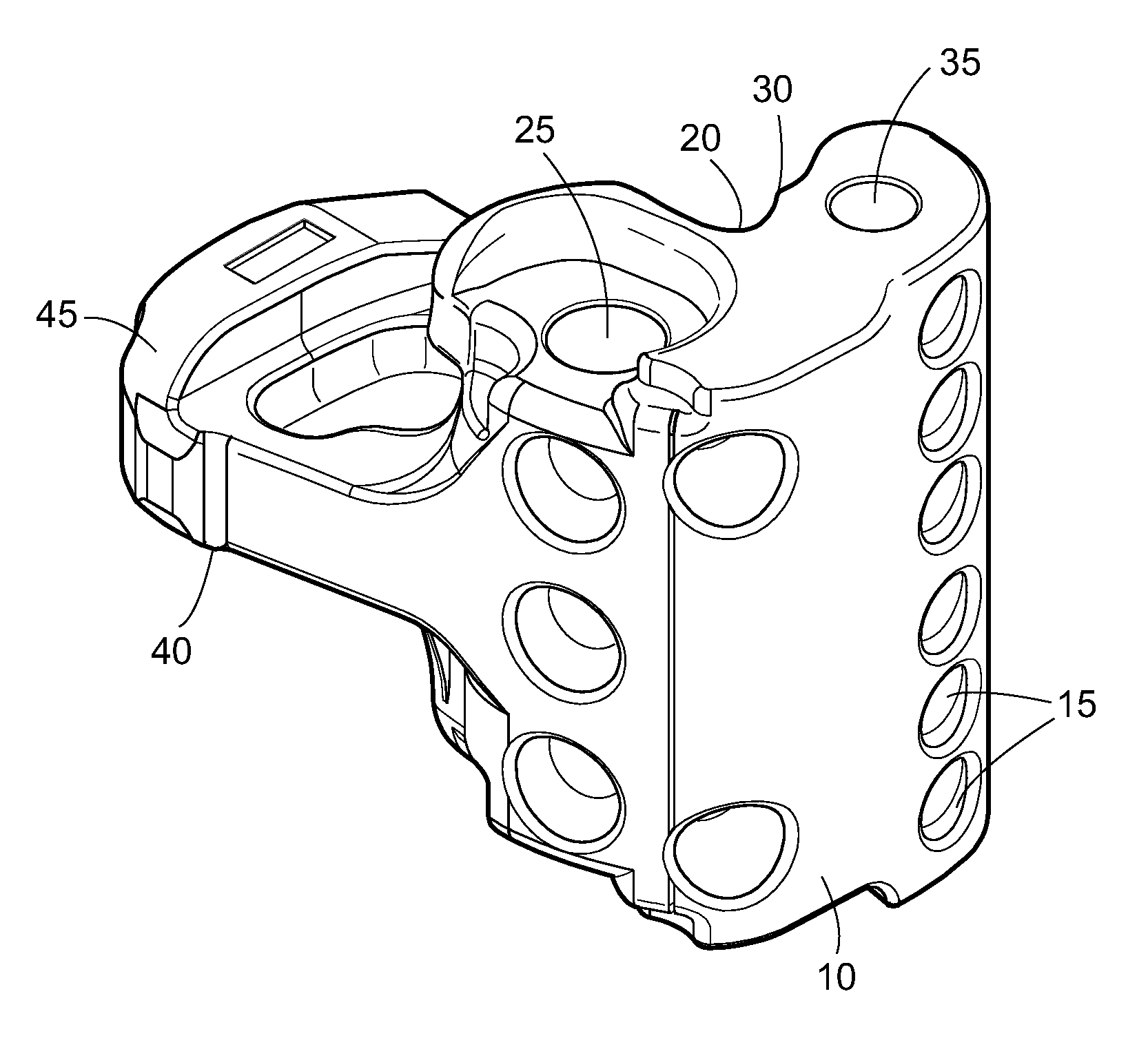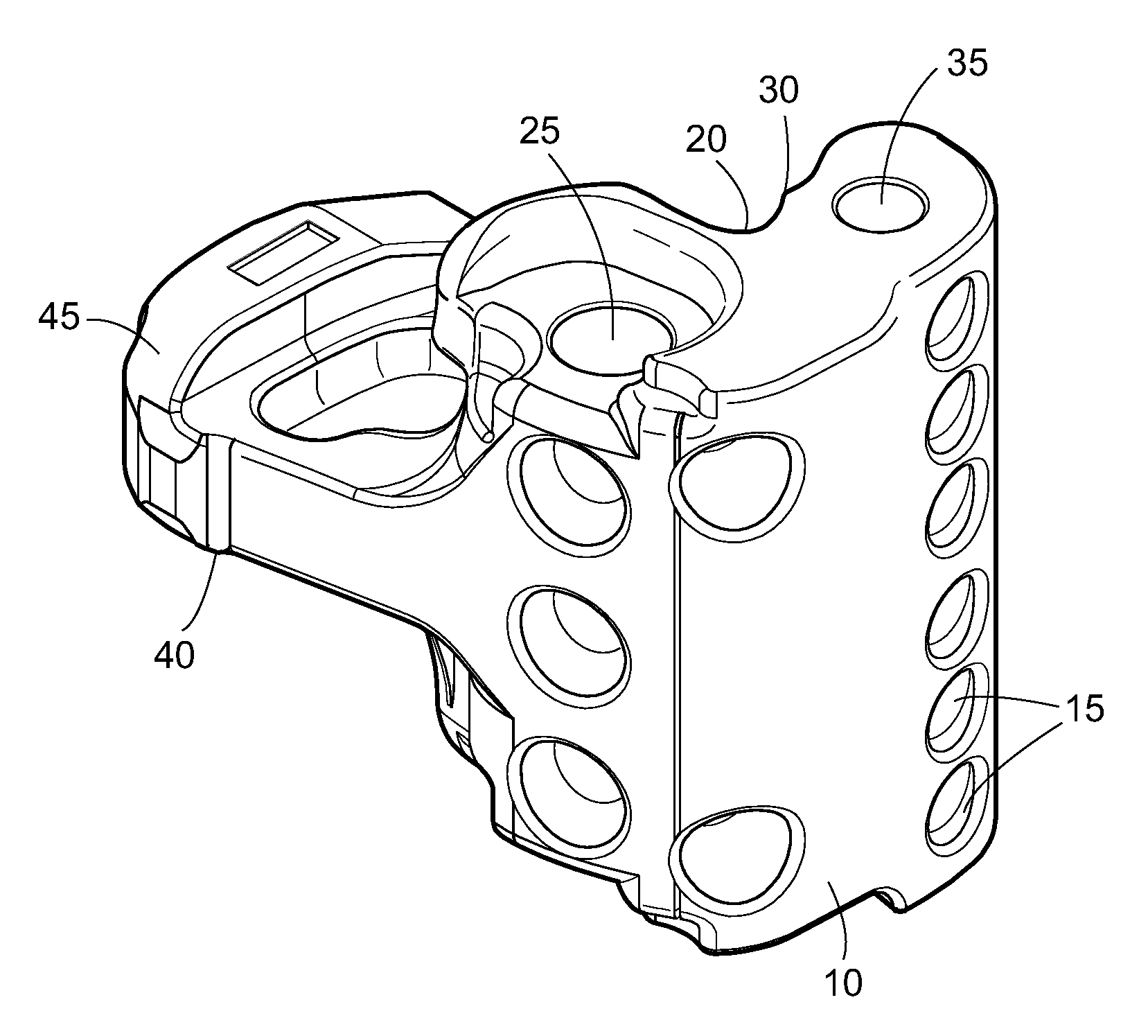Knuckle for a railway car coupler
a technology for railway cars and couplers, applied in the field of railway car coupler systems, can solve the problems of prone to failure, premature failure, and inconsistent average fatigue life of knuckles, and achieve the effect of reducing porosity
- Summary
- Abstract
- Description
- Claims
- Application Information
AI Technical Summary
Benefits of technology
Problems solved by technology
Method used
Image
Examples
Embodiment Construction
[0013]As used herein, directions are relative to the normal orientation of a railway car. Thus, “horizontal” means generally parallel to the earth, and vertical is the perpendicular direction. The words “forward” and “front” refer to the direction away from the railway car, while “tail” and “rear” refer to the opposite direction. This means that the “front” ends of two coupler systems on adjacent railway cars face each other, in opposition directions. “E-type” and “F-type” are used to refer to types of coupler head generally, without reference to the details of a particular AAR standard. One of ordinary skill in the art will readily understand that a knuckle according to the invention may be for attachment to an “E-type” coupler head, even though the coupler may depart slightly from one or more AAR standards. Relative vertical motion between two F-type couplers is eliminated by interlocking features on the coupler head which are not present on the E-type coupler head. Although the k...
PUM
 Login to View More
Login to View More Abstract
Description
Claims
Application Information
 Login to View More
Login to View More - R&D
- Intellectual Property
- Life Sciences
- Materials
- Tech Scout
- Unparalleled Data Quality
- Higher Quality Content
- 60% Fewer Hallucinations
Browse by: Latest US Patents, China's latest patents, Technical Efficacy Thesaurus, Application Domain, Technology Topic, Popular Technical Reports.
© 2025 PatSnap. All rights reserved.Legal|Privacy policy|Modern Slavery Act Transparency Statement|Sitemap|About US| Contact US: help@patsnap.com


